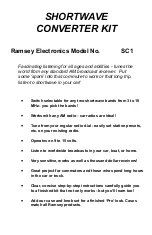
21
Installation and Operating Manual for RPI M15A M20A Solar Inverter V1.0 2016-03-18
5 Operating behaviour
5.
Operating behaviour
5.1 General mode of operation
The inverter converts the direct current generated by the solar
modules into alternating current which is then fed into the public
grid.
5.2 MPP tracking
MPP tracking is an automatic function which continuously
ensures that the inverter is always operating in the maximum
output range possible under the current ambient conditions. The
DC input voltage is used as the reference for this.
The inverter has 2 MPP trackers, one for each of DC1 and DC2.
The solar modules that are connected to the two DC inputs do
not need to have the same output. Within certain limits, module
strings with differing outputs can be connected (see “14. Techni-
cal data” page 162).
5.3 Anti-islanding device
In the event of a grid failure, the integrated anti-islanding device
shuts the inverter down.
5.4 Temperature control
The specific values for the technical parameters described in
this section can be found in the chapter “14. Technical data”
page 162.
The inverter has two operating temperature ranges that are
important for its operating behaviour.
●
Operating temperature range
●
Operating temperature range without limiting
The
operating temperature range
is greater than the
operating
temperature range without limiting
.
If the ambient temperature lies within the
operating temperature
range without limiting
, the inverter works at the maximum pos-
sible output power. If the ambient temperature is higher, but still
within the
operating temperature range,
the output power will be
continually reduced with rising ambient temperature. If the ambi-
ent temperature rises above the
operating temperature range
,
the AC output will be switched off and the inverter will no longer
feed energy into the public grid.
The inverter is cooled by means of fans.
5.5 Influence of DC input voltage
The specific values for the technical parameters described in
this section can be found in the chapter “14. Technical data”
page 162.
The
maximum DC input voltage
must never be exceeded. Meas-
ure the DC input voltage and use an overvoltage protector on the
DC side to prevent higher DC input voltages. The maximum open
circuit voltage occurs at the lowest ambient temperatures that
can be assumed.
The
DC input voltage range
is used to define the DC input volt-
ages for which the inverter will supply power to the public grid.
The
MPP input voltage range
is used to define the DC input volt-
ages for which the MPP trackers are activated.
The
MPP input voltage range at full power
is used to define the
DC input voltages for which the inverter can deliver the maximum
output power. However the actual output power still depends on
other conditions such as, for example, the ambient temperature.
5.6 Functions for influencing the operating
behaviour
The inverter provides various functions which can be used to
influence the operating behaviour.
● Active power control
● Reactive power control
● Insulation and grounding monitoring
A detailed description of these functions can be found in the
chapter “9. Settings” page 72.
5.7 Power grid imbalance compensation
The inverter has an integrated power grid imbalance compen-
sator. This ensures that the supplied power is always distributed
evenly across all the phases.
















































